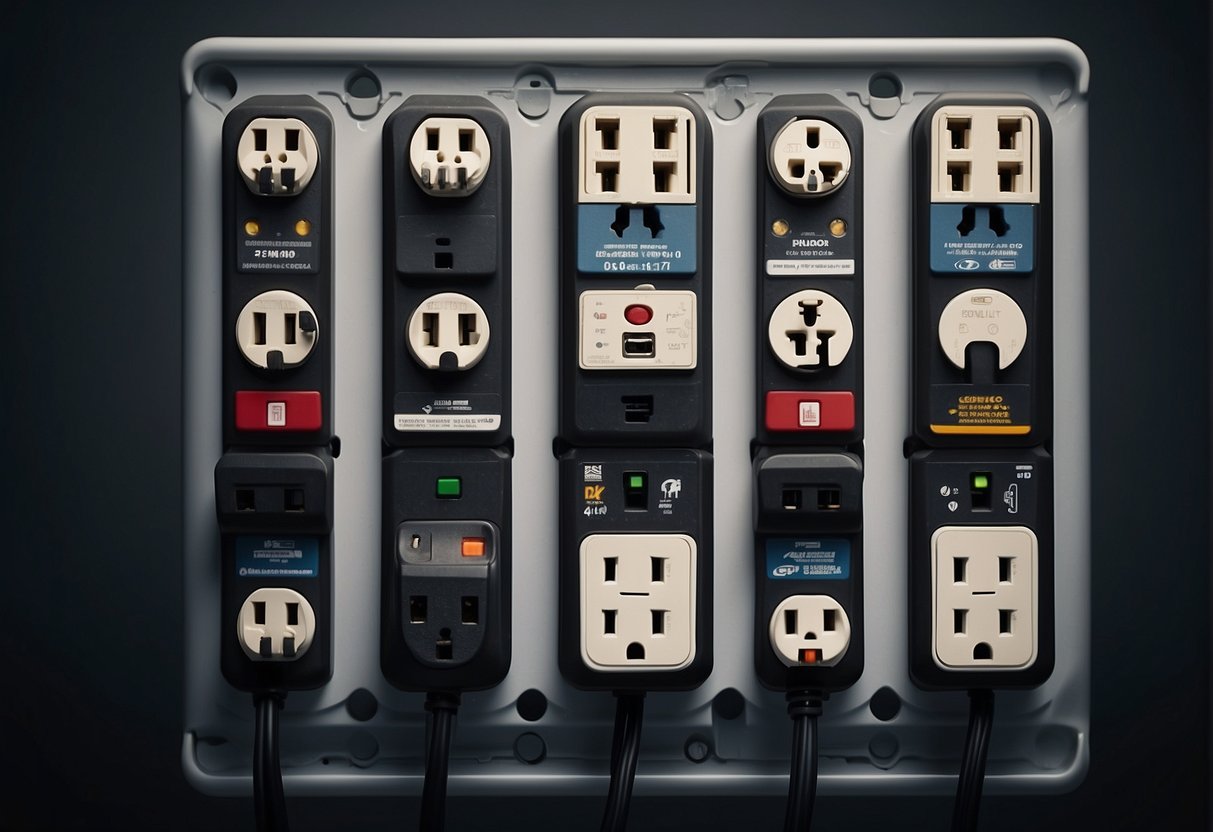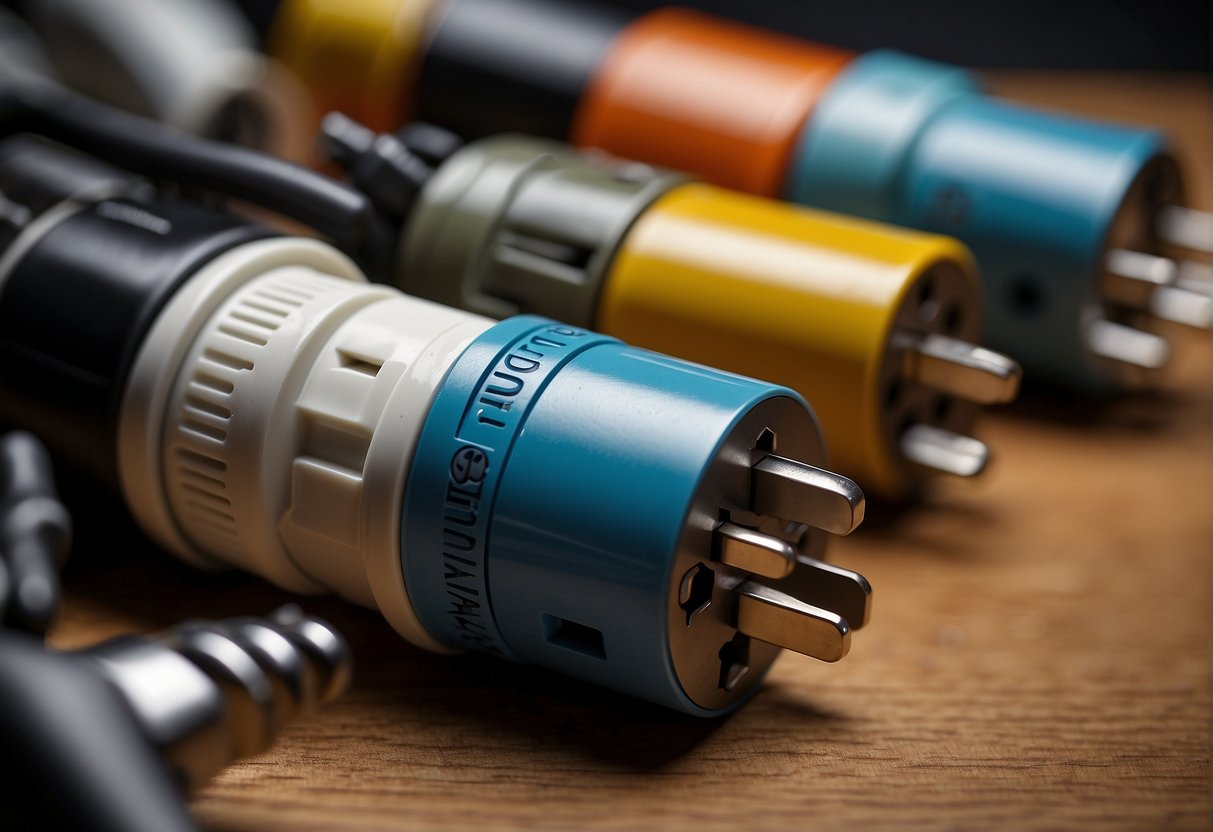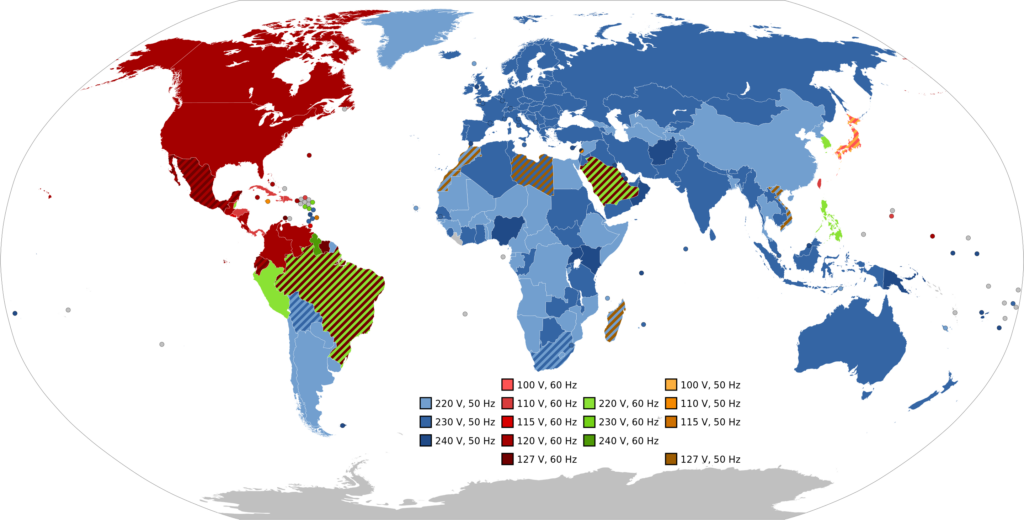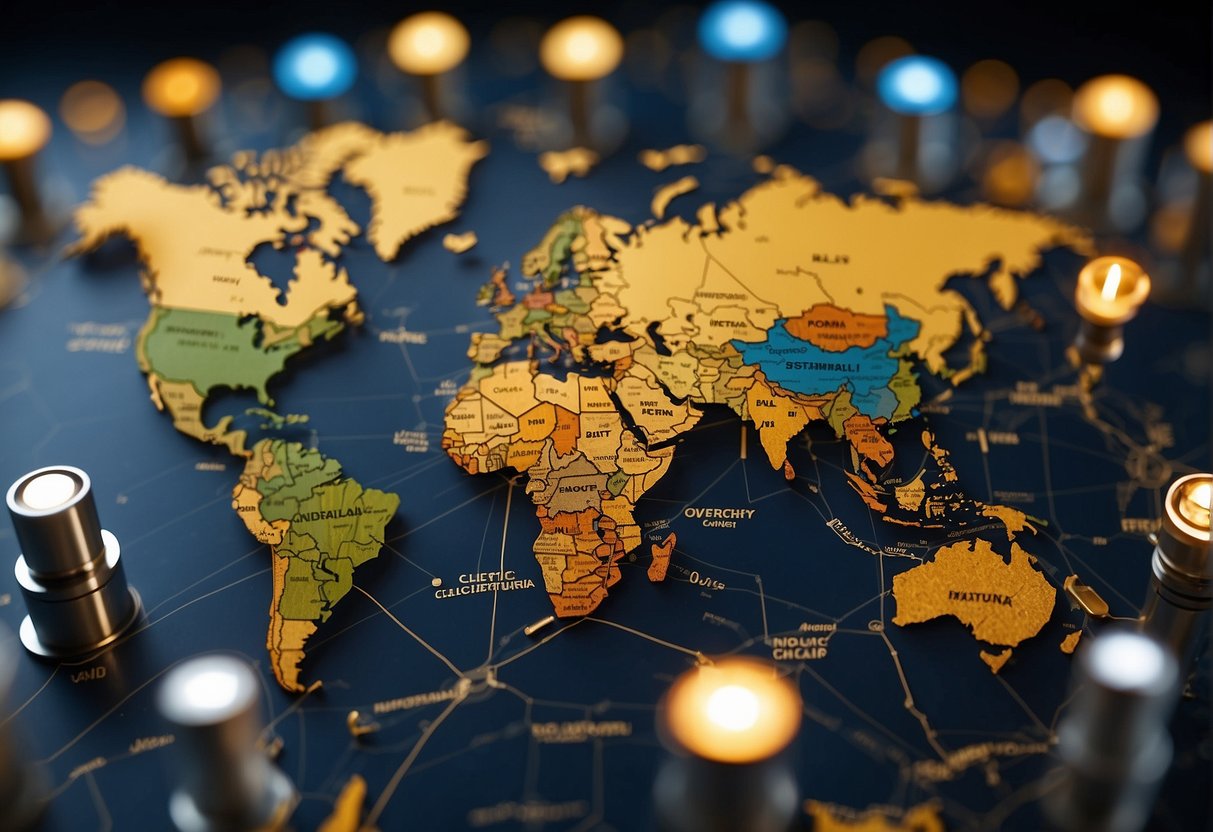Traveling with electronic devices requires awareness of the different plug standards utilized across the globe. Different countires will use different sockets, along with voltages and frequencies.
For instance, the United Kingdom predominantly uses Type G outlets, while most of continental Europe uses Types C, E, and F. This divergence necessitates the use of travel adapters that allow a device’s plug to fit into a foreign socket.

A separate issue is whether you need a simple travel adapter, or a transformer / voltage multiplyer.
Many modern electronics are designed to operate on a range of 100 to 240 volts, rendering them compatible with the mains supply in most countries without the need for a converter. However, if a device is rated for a specific voltage that does not match the destination’s supply, a voltage converter is required to adjust the electricity to a suitable level, preventing potential damage to the device.
Unlike voltage converters, adapters are simple devices that simply connect a plug to a socket of a different type.
Global Variations in Plug Types
Traveling across different continents necessitates a keen awareness of the various plug and socket types encountered around the world. The International Electrotechnical Commission (IEC) recognizes a multitude of plug types, from Type A to Type N, with differing pin shapes, sizes, and arrangements to accommodate regional electricity voltage and frequency standards.
Plug Types in Europe
In Europe, the most common outlet types are Type C and Type F, which are used throughout the continent, including in Germany and France. Type E is often seen in France and Belgium. Italy uses Type L plugs and sockets, which come in two variants: 10 A and 16 A, each designed for specific electrical loads. Type K is a Danish standard, whereas Switzerland uses Type J outlets.
Plug Types in Asia
Asia exhibits rich diversity in plug standards. For instance, Type A and Type B are predominantly used in Japan, while Type I is widely found in China, Australia, and New Zealand.
Countries like India, Thailand, Nepal, and Vietnam mainly utilize Type D and Type M plugs and outlets. Meanwhile, Type G, a British standard with three rectangular prongs, is used in Malaysia, Singapore, and Indonesia. Type G is also used in the United Arab Emirates, which was a british territory until the 1980s.
In practice most Thai sockets will fit both North American ,and circular plugs, although in the long run they intend to move to support only the circular plugs. Regardless of which shape you see, remember that Thailand always uses 220 / 240 V.
Plug Types in the Americas
The Americas present a mix of plug types. Type A and Type B sockets are standard in the North American countries of the United States and Canada. Another quirk to be aware of is some places in Mexico use 127v instead of 120v.
Moving to Latin America, Brazil and Argentina exhibit a unique type, known as Type N, which shares compatibility with certain Type C plugs. In Central America, Type A and Type B remain dominant.
Plug Types in Africa
Type C and Type E sockets are commonly found in Northern African countries like Egypt. Certain regions, particularly South Africa and Nigeria, use Type D, Type M, and the less widespread Type N sockets distinctive for their large circular pins. These types ensure compatibility with various plugs, catering specifically to the regional power requirements.
Plug Types in Oceania
In Oceania, Australia and New Zealand exclusively use Type I plugs and sockets, recognizable by their three flat pins in a V-shape formation. This type is also common in several other Pacific countries and ensures a grounded and secure connection for electrical devices.
Electrical Systems and Safety

When traveling internationally, understanding voltage and frequency differences is essential for safely using electronic devices. Proper use of converters and adapters ensures device compatibility and prevents potential hazards.
Voltage and Frequency Differences

World voltage map courtesy of https://en.wikipedia.org/wiki/Mains_electricity_by_country#/media/File:World_Map_of_Mains_Voltages_and_Frequencies,_Detailed.svg
Electricity around the world varies not only in voltage but also in frequency.
Most countries utilize voltages between 220 and 240 volts with a frequency of 50 Hz, while a smaller number operate on 100-127 volts at 60 Hz.
For instance, laptops and phones may require a travel adapter or a voltage converter for safe operation when used in a country with different electrical standards.
- Common Voltages: 100-127V / 220-240V
- Common Frequencies: 50 Hz / 60 Hz
Safe Use of Converters and Adapters
To ensure safety, travelers must determine whether their devices need an adapter for plug compatibility or a transformer for voltage conversion.
Adapters allow devices to fit into foreign outlets, but do not change the electrical voltage.
A converter or transformer, however, is necessary when a device’s voltage rating does not match the destination’s voltage.
- Adapters: For plug fitting only.
- Converters/Transformers: For voltage conversion.
It is critical for the safety of devices and users to check the voltage and frequency specifications of each device before plugging it into a foreign electrical system.
Misuse of electrical components can lead to device failure, or worse, create a fire risk from overloading or incompatible voltage and frequency connections.
Travel and Compatibility
When traveling internationally, it is crucial to understand the different plug standards and voltages used around the world to ensure one can safely use their devices such as laptops and phones.
Choosing the Right Adapter
Travelers must first identify the plug type required for their destination.
Electrical outlets vary across countries, featuring different pin configurations and designs.
It is not uncommon for a traveler to carry multiple plug adapters to fit local socket types.
For instance, a trip to Europe would typically require a Type C or Type E/F adapter for most continental countries, while the United Kingdom uses a unique Type G adapter.
The necessity to choose an appropriate travel adapter also extends to the voltage requirements of the device being used.
Most modern laptops, phones, and other portable electronics support dual voltage, which means they can operate on a range from 100-240 volts, thus needing only an adapter for the plug itself.
However, always check the device’s voltage range to confirm compatibility.
Voltage Converters for Safe Appliance Use
While many personal devices are dual-voltage, certain appliances may require a voltage converter or transformer for safe operation.
The standard line voltage for countries varies; a significant number use 220-240 volts, while others, like the United States and Canada, operate on 100-127 volts.
If a device is not designed for the destination’s voltage, plugging it in without a converter can result in damage or pose a safety hazard.
The decision to use a voltage converter hinges on the electrical specifications of the appliance.
For example, a traveler from the US with a single-voltage device would need a converter to use it safely in European countries.
It is crucial to choose a converter that can handle the wattage requirement of the device. Failure to do so could lead to overheating or device failure.
Standards and Regulations

In the context of electrical connectivity, understanding the standards and regulations for plugs, sockets, and converters is crucial for safety and compatibility across different countries.
International Electrotechnical Commission (IEC) Standards
The International Electrotechnical Commission (IEC) sets the global standards for electrical technologies.
These standards ensure devices adhere to certain specifications for safety and interoperability.
IEC standards for plugs and sockets, such as the IEC 60906-1, aim to establish a universal plug system, although not all countries have adopted it. IEC standards also inform the design and use of converters and adapters, which are necessary when the plug of an appliance does not match the socket configuration of a different country.
Country-Specific Electrical Codes
Each country often follows its own electrical codes and regulations that dictate electrical installations and safety standards.
These codes determine the type of plugs, sockets, and voltages used within a country.
For example, the United States uses Type A and B plugs at 110-120V, whereas much of Europe uses Type C, E, and F plugs at 220-240V.
Travelers must be aware of these differences and may require either an adapter or a converter—or both—to ensure their appliances function properly and safely.
For instance, an adapter changes the plug shape to fit a socket, while a converter adjusts the electrical voltage to match the appliance’s requirements.
Consumer Guides
When it comes to traveling with electronics, knowing the difference between plug adapters and voltage converters is crucial for the safety and functionality of your devices. These essentials ensure that travelers can use their electronics seamlessly abroad.
Selecting Plug Adapters and Converters
Plug adapters are the first consideration for international travel with electronics. These simply allow plugs from one country to fit into the outlets of another. It’s important to identify the plug type of your destination by referencing a visual guide to international outlets, ensuring compatibility with your device’s plug.
Voltage converters or transformers are necessary when the electronic device’s voltage is not compatible with the destination country’s voltage. For instance, if a device is rated for 110V and is traveling to a country with a standard 220V supply, a converter is essential to avoid damaging the device. You can find detailed voltage by country information in guides like full list: Plug, socket & voltage by country.
- Travel Adapter: Adapts plug shape to fit foreign outlets.
- Converter/Transformer: Adjusts voltage to match your device’s requirements.
Tips for International Travel with Electronics
For successful travel with electronics, one should not only have the correct adapter and converter, but also be aware of other practical considerations:
- Check your device’s plaque: Ensure you know the voltage and plug type requirements.
- Dual voltage devices: Some gadgets are dual voltage (e.g., 110V/220V), so you only need to use a plug adapter.
- Purchase before travel: Acquire the necessary adapters and converters before your journey to avoid inconvenience.
- Power strips: A universal power strip with a surge protector can be useful. It allows multiple devices to be charged with one adapter.
Globe-trotting with a flair for the fearless, Sierra Blake crafts vivid tales and insider tips from the world’s hidden corners, inspiring wanderlust in the heart of every reader.

Leave a Reply